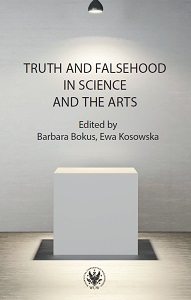Truth and Untruth in Irony
Truth and Untruth in Irony
Author(s): Anna Milanowicz
Subject(s): Philosophy, Psychology, Theoretical Linguistics, Applied Linguistics
Published by: Wydawnictwa Uniwersytetu Warszawskiego
Keywords: truth; non-literal language; irony; meaning ambiguity; gender
Summary/Abstract: The concept of truth in irony should be approached through the lens of the speaker’s beliefs and intentions. However, the experience and emotions of an ironic message’s recipient are not without significance. The proposed approach describes irony as a form of concealment and camouflage. Irony vibrates between “what is said but not intended” and “what is intended but not said. ”It balances between the ostensible truth and the ostensible untruth. “Ironic criticism,” also known as “blaming by praise,” appears positive, although its true message is not. The reverse happens to be true for “ironic praise.” From a moral perspective, irony is not virtuous: It violates “truth-telling” and is sometimes clownish. The author’s final considerations on the subject of “Does irony have gender?” are followed by a concise description of gender differences in the use of irony and self-mockery.
Book: Truth and Falsehood in Science and the Arts
- Page Range: 205-211
- Page Count: 7
- Publication Year: 2020
- Language: English
- Content File-PDF

